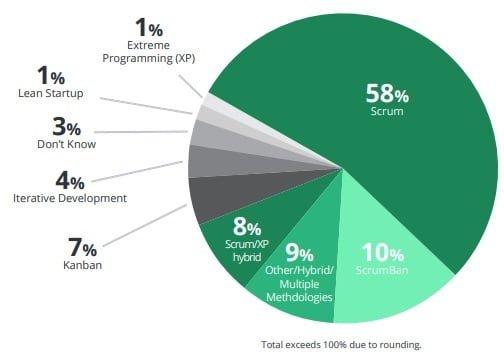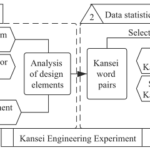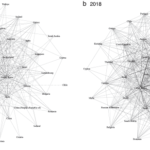Agile Methodologies have become a buzzword in the business world, promising increased productivity, faster delivery, and higher customer satisfaction. But what exactly are agile methodologies, and how can they be implemented and adapted to your business?
Agile methodologies focus on iterative and collaborative development, enabling teams to produce high-quality work in shorter timeframes. By embracing agile principles, companies can swiftly respond to changes in the market and customer demands. From Scrum to Kanban and extreme programming, we’ll explore different types of agile methodologies and highlight their unique benefits and best practices.
Implementing agile methodologies requires a cultural shift within an organization. It involves empowering cross-functional teams, promoting open communication, and fostering a mindset of continuous improvement.
While agile methodologies were initially designed for the software industry, their application has extended to various business sectors and education. According to the 14th Annual State of Agile Report, agile methodologies are not limited to software organizations alone; they are being adopted in software development (37%), IT (26%), operations (12%), marketing (7%), human resources (6%), sales (5%), and more.

Agile methodologies can be employed in project management in general, especially in areas of innovation, and in a context of uncertainty. Agile approaches can assist you, based on experimentation, in innovating with your projects.
What are Agile Methodologies?
The history of Agile methodologies began when the software development industry realized that the traditional way of working was delaying the delivery of the final product. This led industry leaders to come together in 2001.
Agile methodologies are defined as a set of tasks and procedures aimed at project management, allowing the work approach to be adapted to project conditions.
Agile methodologies are a set of flexible, customer-centric approaches to project management and product development. They focus on iterative and collaborative development, enabling teams to produce high-quality work in shorter timeframes. Agile methodologies are designed to respond quickly to changes in the market and customer demands, promoting continuous improvement and customer satisfaction.
It’s important to note that “Agile” is much more than just a methodology; it’s a philosophy that represents a different way of working and organizing.
It should be known that Molina et al. (2015) emphasize that the key characteristic of agile methodologies is flexibility. Projects in development are subdivided into smaller projects, involve constant communication with the user, are highly collaborative, and are much more adaptable to changes.
Furthermore, the end result of applying agile methodologies is a product or project that meets customer needs, has been developed with low costs, minimal waste, and in less time (Kurup and Kala, 2015).
Finally, agile methodologies are based on the Agile Manifesto, a set of guiding principles for software development that prioritize people and interactions, working software, customer collaboration, and responding to change.
Values of the Agile Manifesto
In 2001, a group of software developers came together to present new software development techniques. They established values and principles for agile methodologies.
The four values of the Agile Manifesto are:
- Individuals and interactions over processes and tools: The team must work together to achieve their goals.
- Working software over excessive documentation: Traditionally, a large amount of documentation is generated. It is more important to invest time and energy in software that functions and can be delivered to the customer.
- Collaboration with the customer over contract negotiation: The relationship between the customer and the development team should be smooth, and it is important to create an atmosphere of trust.
- Responding to change over following a predetermined plan: The team must be prepared for changes that may arise during the software development process.
Principles of the Agile Manifesto
The Agile Manifesto also includes 12 principles that arise from the described values:
- Customer satisfaction through early and continuous software delivery.
- Embrace changes and gain a competitive advantage.
- Divide development into frequent deliveries.
- Enable feedback between the team and the customer during the project.
- Motivated individuals: Provide the necessary environment and support and trust them.
- Face-to-face communication as the primary method of conveying information within a development team.
- Working software is the primary measure of progress.
- Agile processes promote sustainable development. Sponsors, developers, and users should be able to maintain a constant pace.
- Continuous attention to technical quality and good design enhances agility.
- Simplicity is essential.
- The best architectures, requirements, and designs emerge from self-organizing teams.
- At regular intervals, the team reflects on how to become more effective.
Project Management with Agile Methodologies
Traditional project management is a linear and sequential approach to project management, where work is divided into phases, and each phase must be completed before moving on to the next. Traditional project management is based on detailed planning and strict adherence to deadlines and budgets.
Agile methodologies, on the other hand, are based on an iterative and incremental approach, where work is divided into short sprints, and each sprint delivers a functional product or feature. Agile methodologies are built on flexibility and adaptability, allowing teams to respond quickly to changes in the market or customer demands.
While traditional project management may be suitable for projects with well-defined requirements and a stable environment, agile methodologies are more suitable for projects with changing requirements and uncertain environments.
In Table 1, I present a comparison between traditional and agile methodologies for project management.
Table 1. Comparison between traditional and agile methodologies for project management.
| Traditional Methodologies | Agile Methodologies |
| Predictive | Adaptive |
| Based on standards | Based on learned best practices |
| Process-oriented | People-oriented |
| Inflexible or rigid processes | Prepared for project changes |
| Externally imposed standards | Internally imposed standards |
| Hierarchical, policy-driven | Less principle-driven processes |
| Treated as a single project | Subdivided into smaller projects |
| Contract-heavy | Limited or flexible contracts |
| Limited client-developer dialogue | Integrated client within the team |
| Large groups, distributed teams | Small groups, co-located teams |
| Many roles in the organization | Fewer roles |
| Extensive documentation | Minimal documentation |
| Architecture is essential | Less emphasis on architecture |
Advantages of Agile Methodologies
Implementing agile methodologies can offer many benefits to your business. Agile methodologies promote customer satisfaction by delivering high-quality products that meet their needs. They can also increase productivity by breaking down work into smaller, manageable tasks, allowing teams to focus on generating value quickly.
Gomes et al. (2022) report that the implementation of agile project management has direct effects on the social, economic, and environmental dynamics of companies, as well as on their teams, with a favorable effect on all of them.
Agile methodologies can also enhance team morale by fostering a collaborative and empowering work environment. By promoting open communication and cross-functional teams, agile methodologies can help break down silos and improve team dynamics. This, in turn, can lead to greater innovation and creativity, as team members are encouraged to share ideas and work together.
Barbosa et al. (2022) conclude that agile methods have proven to be productive allies for teams in various evaluation areas and provide quick, creative, and effective business opportunities or solutions to everyday problems for customers.
Furthermore, agile methodologies can help companies respond rapidly to changes in the market and customer demands. By embracing agile principles, companies can pivot quickly and make changes to their products or services to meet the evolving needs of their customers.
According to researchers, the key advantages of agile methodologies can be summarized as:
- Improved product quality
- Higher customer satisfaction
- Increased employee motivation
- Collaborative work
- Use of more relevant metrics
- Greater control and predictive ability
- Cost reduction
Disadvantages of Agile Methodologies
Agile is not a panacea; according to Jordán (2020), the main disadvantages of agile methodologies are:
- It’s easy to make the mistake of thinking that agile development doesn’t require documentation.
- The lack of documentation can lead to misunderstandings between the client and the development team. Something in writing ‘can’t be erased,’ whereas something said verbally can create problems.
- Sometimes, without the appropriate documentation, there can be a decrease in code reusability.
- Technical debt: These work methods focus on people rather than documentation, so if a project fails, the understanding of the system largely remains in the hands of the development team.
- Fear of failure: If an agile project fails, it’s common to revert to traditional work methods.
- There is often a strong dependency on leaders. The person in charge of leading the project centralizes decision-making
Additionally, Koi-Akrofi (2019) and Mishra et al. (2021) highlight that the main reasons for the failure of agile methodologies are:
- Insufficient experience with agile methodologies.
- Limited understanding of the organizational changes required.
- Company philosophy or culture contradicting agile principles.
- Lack of support from management.
- The large size of the organization.
- Traditional organizational culture.
When to Use Agile Methodologies?
By this point, you might be wondering when to employ agile methodologies. The first thing to consider is whether your company is prepared to implement them.
According to Rigby et al. (2016), agile is more effective and easier to implement under conditions commonly found in software innovation: the problem to be solved is complex; solutions are initially unknown, and product requirements are likely to change; the work can be modularized; collaboration with end-users is feasible; and creative teams often outperform command and control groups.
However, the same Rigby et al. (2016) also emphasize that the cited conditions are common in product development functions, marketing projects, strategic planning activities, supply chain challenges, and resource allocation decisions.
Kurup and Kala (2015) point out that agile project management can be technically adapted to all kinds of projects; nevertheless, there are some characteristics where agile methodologies are more favorable:
- Dynamic requirements
- Iterative nature
- Interactive philosophy and active user involvement
- Competent team
- Acceptable cost of failure
Likewise, Rigby et al. (2016) indicate that the right conditions for the use of agile methodologies are described in Table 2.
Table 2. Appropriate Conditions for Agile Methodologies.
| Conditions | Favorable | Unfavorable |
| Market Environment | Customer preferences and solution options change frequently. | Market conditions are stable and predictable. |
| Customer Involvement | Close collaboration and rapid feedback are feasible. Customers better understand their needs as the process unfolds. | Requirements are clear from the start and will remain stable. Customers are not available for constant collaboration |
| Type of Innovation | Problems are complex, solutions are unknown, and the scope is not clearly defined. Product specifications may change. Creative breakthroughs and time to market are critical. Multi-functional collaboration is vital. | Similar work has been done before, and innovators believe solutions are clear. Detailed specifications and work plans can be confidently forecast and must be adhered to. Problems can be resolved sequentially in functional silos |
| Modular Work | Incremental developments have value, and customers can use them. Work can be divided into parts and performed in rapid, iterative cycles. Last-minute changes are manageable. | Customers cannot begin testing product parts until it’s complete. Last-minute changes are costly or impossible. |
| Impact of Errors | They provide valuable learning experiences. | They can be catastrophic. |
Models of Agile Methodologies
According to the 14th Annual State of Agile Report (2020), the agile methodology SCRUM (58%) and its variants are the most commonly used by surveyed companies, followed by Kanban (7%), Iterative Development (4%), and Extreme Programming (1%).

Next, we will provide a description of each of the most commonly used Agile methodologies:
SCRUM
Scrum is one of the most popular variants of Agile methodologies and is commonly used in software development projects. Scrum is based on an iterative and incremental approach, where work is divided into short sprints, and each sprint delivers a functional product or feature.
According to Molina et al. (2018), the SCRUM methodology is a framework designed to achieve effective team collaboration, employing a set of rules and defining roles to create a well-functioning structure.
Scrum is based on the theory of empirical process control or empiricism; there are three fundamental pillars that support empirical process control: transparency, inspection, and adaptation (López, 2015).
Although SCRUM originated focused on software development, its application can be extended to almost any context (Jordán, 2020). Thus, it becomes a tool you should master.
The idea behind Scrum is to make partial deliveries of the final product by running the project in short cycles of a specified duration.
Scrum defines three roles:
- Scrum Master: Leads the team, ensuring they adhere to the rules and processes. They are responsible for ensuring that the team adopts the theories, practices, and rules of the Scrum methodology.
- Product Owner: The representative of stakeholders and customers using the software. They are responsible for conveying the product vision to the development team, contributing the business perspective.
- Development Team: A group of professionals responsible for turning the requirements list into software functionalities. They maintain a flat organization in which each team member is self-managing and organizes freely in defining and executing various sprints.
The Scrum methodology describes four key milestones:
- Sprint Planning
- Meeting Daily
- Scrum Sprint Review
- Sprint Retrospective
Kanban
Kanban is an alternative approach to Agile methodologies that focuses on visualizing work, limiting work in progress, and delivering work when it’s ready. Kanban emphasizes continuous flow, enabling teams to deliver value quickly and respond promptly to changes in the market or customer demands.
The primary goal of the Kanban method is to quickly visualize all the work at a glance, along with the individuals responsible for each of these tasks (Jordán, 2020). The origin of Kanban can be traced back to “Just In Time” (JIT) production systems.
Kanban is a Japanese word that means “visual cards” and is used to control the continuous progress of work in projects.
The Kanban method is based on a board that features three columns:
- Tasks To Do
- Tasks In Progress
- Tasks Done
Ovan et al. (2018) describe that the benefits of the Kanban Agile methodology in manufacturing include:
- Limiting work in progress (WIP)
- Monitoring and controlling the production process
- Visual scheduling
- Improving flow
- Responsiveness to changes
- Facilitating high production
- Preventing overproduction
- Enhancing capacity utilization
- Reducing production time
Extreme Programming (XP)
The main feature of the Agile methodology Extreme Programming is user stories, which correspond to a requirement specification technique.
The goal of Extreme Programming is to enhance interpersonal relationships, emphasizing team interactions, development, learning, and fostering a good working atmosphere (Muñoz, 2020).
In Extreme Programming, the process known as the ‘Planning game’ is carried out, which defines the delivery date and scope of a functional delivery. The client defines user stories, and the developer, based on them, establishes the delivery’s features, implementation costs, and the number of interactions to complete it.
Lean
Lean principles focus on eliminating waste and delivering value with the least amount of resources.
Crystal
Crystal methodologies prioritize team communication, reflecting the project’s size and criticality.
DSDM (Dynamic Systems Development Method)
DSDM provides a framework for project delivery and focuses on frequent delivery and maintaining strict deadlines.
How to harness the potential of Agile methodologies?
To harness the potential of Agile methodologies, you should follow the six key practices that leaders must adopt if they want to capitalize on Agile potential, as identified by Rigby (2016):
- Learn how Agile really works.
- Understand where Agile methodologies work and where they don’t.
- Start small and then let it spread.
- Allow ‘master’ teams to customize their practices.
- Practice Agile in upper management.
- Break down barriers to Agile behaviors.
Implementing Agile methodologies in your business
Implementing Agile methodologies requires a cultural change within an organization. It involves empowering cross-functional teams, promoting open communication, and fostering a mindset of continuous improvement.
Mishra et al., (2021) point out that organizational culture, team structure, and management support are crucial factors for the success of Agile methodology implementation. The selection of an appropriate Agile method depends on the project size, and for each size, different companies prefer specific methods.
Here are some steps to help you introduce Agile methodologies into your business:
- Identify areas where Agile methodologies can be applied.
- Educate your team about Agile methodologies and the benefits they offer.
- Start with small pilot projects to test the waters.
- Emphasize the importance of collaboration and open communication.
- Provide the necessary tools and resources to support Agile methodologies.
- Celebrate success and promote continuous improvement.
Agile Methodology Certifications
To master Agile methodologies and project management, you can obtain Agile methodology certifications. These certifications validate your understanding and experience in Agile practices. Some popular Agile certifications include:
- Certified ScrumMaster (CSM): Focused on the Scrum methodology and principles.
- PMI Agile Certified Practitioner (PMI-ACP): Covers a wide range of Agile methodologies.
- SAFe Agilist (SA): Focusing on the Scaled Agile Framework (SAFe).
Agile Methodology Ceremonies
Agile methodologies incorporate specific ceremonies to ensure transparency and communication within the team. These ceremonies include:
Sprint Planning
Sprint planning is a collaborative session to plan the next sprint. It includes:
- Selecting items from the product backlog.
- Estimating the effort required for each task.
- Planning the work for the sprint.
Daily Standup
The daily standup consists of brief daily meetings to discuss progress and obstacles. During these meetings, team members discuss their progress, challenges, and goals for the day. It promotes transparency and helps identify and promptly address obstacles.
Sprint Review
A Sprint Review, also known as a Sprint Demo, is a crucial event in the Scrum framework, one of the most popular Agile methodologies used for project management and software development. This review takes place at the end of each sprint, which is a time-boxed work iteration typically lasting two to four weeks. The main goal of the Sprint Review is to inspect and adapt the product increment produced during the sprint.
Sprint Retrospective
The Agile retrospective is a critical practice focused on continuous improvement. It involves:
- Reviewing what went well and what needs improvement.
- Identifying areas for change and making plans to address them.
- Encouraging open communication and honest feedback among team members.
Where to Study Agile Methodologies?
If you’re a project manager or focused on promoting innovation, you need to develop your skills. In this regard, there are several free programs and courses to learn Agile methodologies.
You can learn about Agile project management, using Scrum for project management, Agile leadership principles and practices, innovation with Agile, and problem-solving skills, Agile methodology, an introduction to Agile thinking, among others that will strengthen your capabilities.
Conclusion
Agile methodologies offer many benefits to companies, including increased productivity, faster delivery, and higher customer satisfaction. However, implementing Agile methodologies requires a cultural change within an organization and may not be suitable for all projects or businesses. Research by Soares et al., (2022) and Santos and Carvalho (2022) concludes that the main barriers to Agile methodology implementation are knowledge and technical capabilities, organizational culture, management issues, specific Agile method barriers, product/process issues, and customer problems.
Before adopting Agile methodologies, companies should carefully consider their specific needs and requirements and evaluate whether Agile methodologies are suitable for their organization.
The benefits of Agile outweigh the limitations; however, this presents some challenges, such as a change in your company’s culture and the development of your team’s capabilities to implement Agile methodologies.
Remember, Agile methodologies are about adaptability, collaboration, and continuous improvement. By incorporating these principles into your projects, you’ll be better equipped to meet the changing demands of your industry and achieve lasting success.
Now that you’ve taken the first step in exploring Agile methodologies, the possibilities for growth and efficiency are limitless. Keep innovating, keep collaborating, and watch your projects thrive in the Agile world.
References
Barbosa, A. T. ., Silva, C. C. da ., Caetano, Rebecca L. ., Silva, D. P. S. da ., Barbosa, J. V. ., & Pinto, Z. T. . (2022). METODOLOGIAS ÁGEIS: E SUA APLICABILIDADE NA ÁREA DE MARKETING. Revista Ibero-Americana De Humanidades, Ciências E Educação, 8(3), 1659–1669. https://doi.org/10.51891/rease.v8i3.4751
Gomes Silva, F. J., Kirytopoulos, K., Pinto Ferreira, L., Sá, J. C., Santos, G., & Cancela Nogueira, M. C. (2022). The three pillars of sustainability and agile project management: How do they influence each other. Corporate Social Responsibility and Environmental Management, 29(5), 1495–1512. https://doi.org/10.1002/csr.2287
Jordán D. 2020. Estudio sobre las metodologías ágiles y metodologías tradicionales para gestión de proyectos de software. Trabajo Fin de Master en Dirección de Proyectos Informáticos. Escuela Politécnica Superior de la Universidad de Alcalá. 61 p.
Koi-Akrofi G., J. Koi-Akrofi and H. Akwetey. 2019. UNDERSTANDING THE CHARACTERISTICS, BENEFITS AND CHALLENGES OF AGILE IT PROJECT MANAGEMENT: A LITERATURE BASED
PERSPECTIVE. International Journal of Software Engineering & Applications (IJSEA), Vol.10, No.5.
Kurup D. y S. Kala. 2015. Agile Project Management – Benefits and Challenges. Research Paper for ISM6316.001 Project Management. University of South Florida.
López R. 2015. Metodologías Ágiles de Desarrollo de Software Aplicadas a la Gestión de Proyectos Empresariales. REVISTA TECNOLÓGICA N° 8. ENERO – DICIEMBRE 2015.
Mishra, A., Abdalhamid, S., Mishra, D. et al. Organizational issues in embracing Agile methods: an empirical assessment. Int J Syst Assur Eng Manag 12, 1420–1433 (2021). https://doi.org/10.1007/s13198-021-01350-1
Molina Montero B., Harry Vite Cevallos, Jefferson Dávila Cuesta. 2018. Metodologías ágiles frente a las tradicionales en el proceso de desarrollo de software. Espirales, Vol 2, No 17.
Muñoz Vázquez, Ignacio. 2020. Herramientas de creatividad y metodologías ágiles para la innovación educativa. Universidad Internacional de Andalucía. 16 p.
Navarro A., J. Fernández, J. Morales. 2013. Revisión de metodologías ágiles para el desarrollo de software. Prospect. Vol. 11, No. 2, Julio – Diciembre de 2013, págs. 30-39
Ovan, M., D. Dennehy, K. Conboy, M. Oivo. 2018. Kanban in software engineering: A systematic mapping study. The Journal of Systems and Software. https://doi.org/10.1016/j.jss.2017.11.045
Rial J. 2019. Aplicación de Metodologías Ágiles a Desarrollo de Proyectos. Trabajo fin de Máster Universitario en Ingeniería Industrial. Universidad de Sevilla, 93 p.
Rigby D., J. Sutherland, H. Takeuchi. 2016. Embracing Agile. Harvard Business Review.
Santos, P.d., de Carvalho, M.M. Exploring the challenges and benefits for scaling agile project management to large projects: a review. Requirements Eng 27, 117–134 (2022). https://doi.org/10.1007/s00766-021-00363-3
Soares, D.; da Silva, F.J.G.; Ramos, S.C.F.; Kirytopoulos, K.; Sá, J.C.; Ferreira, L.P. Identifying Barriers in the Implementation of Agile Methodologies in Automotive Industry. Sustainability 2022, 14, 5453. https://doi.org/10.3390/su14095453





